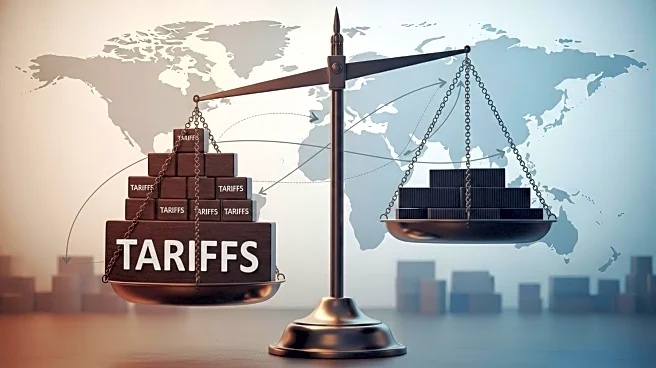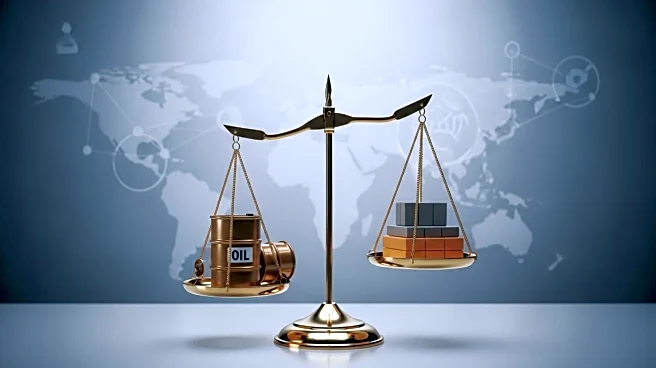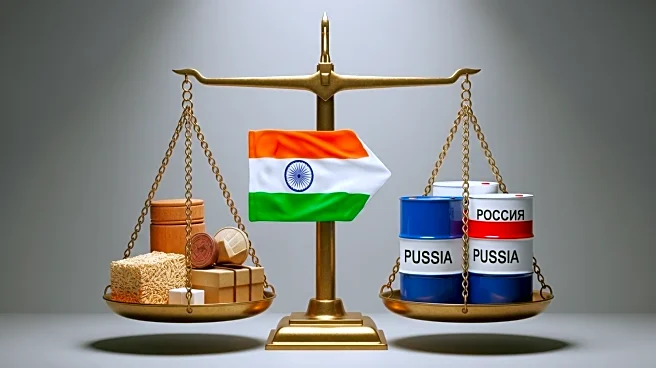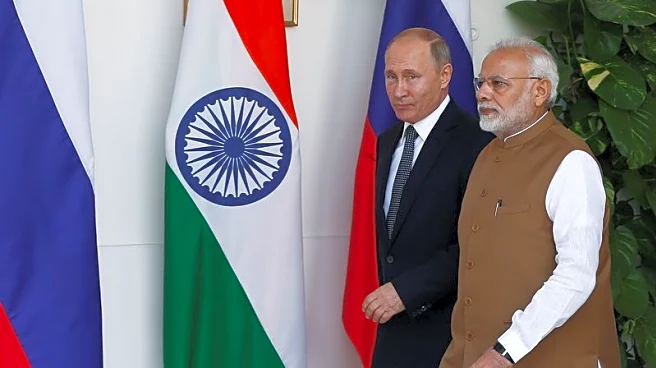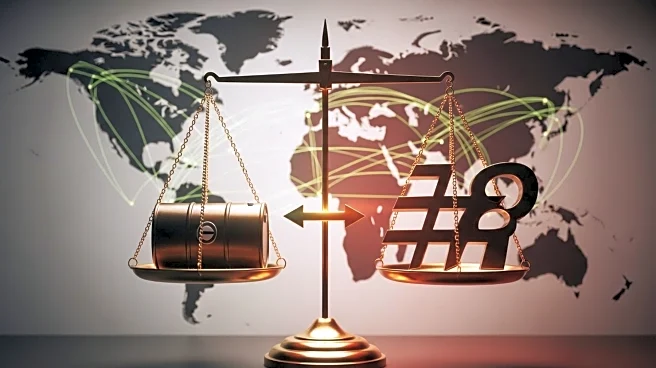What's Happening?
The United States has imposed new tariffs on Indian imports due to India's continued oil trade with Russia. The additional 25% tariff, ordered by President Trump, doubles the existing tariff rate to 50%. This move is part of the U.S. strategy to weaken Russia's economic base amid the ongoing Ukraine conflict. Despite the tariffs, Russia continues to supply oil to India, with both countries exploring further trade in liquefied natural gas. India remains a significant trading partner for the U.S., with oil and gas being major exports from the U.S. to India.
Why It's Important?
The new tariffs underscore the geopolitical tensions involving the U.S., India, and Russia. By targeting India's trade with Russia, the U.S. aims to exert pressure on Russia's economy, which heavily relies on fossil fuel exports. For India, the tariffs could complicate its trade relations with the U.S., potentially affecting its economy and trade strategy. The situation also highlights India's balancing act in maintaining its energy needs while navigating international sanctions and trade pressures. The tariffs could lead to increased costs for Indian imports, affecting various sectors reliant on U.S. goods.
Beyond the Headlines
The imposition of tariffs reflects broader geopolitical dynamics, with the U.S. leveraging economic measures to influence global political alignments. India's decision to continue sourcing oil from Russia, despite Western sanctions, illustrates its strategic autonomy in foreign policy. The situation may prompt India to further diversify its energy sources and trade partnerships to mitigate the impact of such economic pressures. Additionally, the tariffs could influence India's domestic policies, potentially leading to increased focus on energy security and self-reliance.



